
CCAM Microscopy User Facility
Contacts
Ion Moraru, M.D., Ph.D.
Deputy Director
- 860.679.2908
Instrumentation
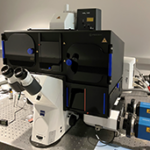
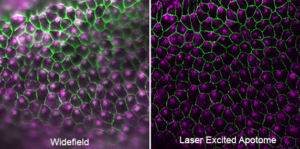
ELYRA 7 SIM2
Structured illumination microscopy, SIM, is a widefield technique that greatly increases the diffraction-limited resolution of the light microscope, ~ 200 nm, to super-resolution, ~ 100 nm. SIM uses a periodic grating that is projected onto the image plane of the microscope. Software is then used to analyze the resulting Moiré pattern, and through deconvolution, a super-resolution image is obtained. The Zeiss Elyra 7 SIM2 uses an advanced reconstruction algorithm that improves the SIM resolution to less than 100 nm, along with quick image acquisition and compatibility for live-cell applications.
The Elyra is capable of other high-resolution techniques such as TIRF, PALM, and STORM. Samples live and fixed, up to ~ 150 µm thickness can be viewed on the Elyra 7 SIM2 . Located at: CGSB, Imaging Suite R1510, 400 Farmington Avenue.
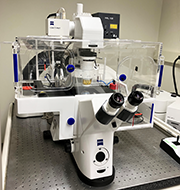
Zeiss LSM 880 Confocal Microscope
The 880 is mounted on an Axio Observer Z1 with automated xyz control. The system is equipped with a spectral 32-channel QUASAR GaAsp detector allowing for spectral imaging and maximum sensitivity photon counting. This detector is effective from 410 - 696 nm. There are two adjacent PMT's, effective range 415 - 735 nm, and a transmitted light detector. The accompanying incubation system, which encloses the microscope, offers stable environmental conditions with temperature, humidity and carbon dioxide control. Located at: ARB, E6011, 263 Farmington Avenue.
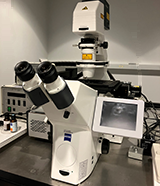
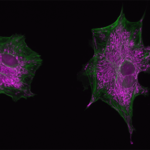
Zeiss Observer Z1 - TIRF
The Zeiss Observer Z1 is a motorized, inverted microscope fitted with a stage-top incubation system for live cell imaging, providing heating, humidification, and carbon dioxide. The system is equipped with a 5.5-megapixel, Andor Neo sCMOS camera. The scope is capable of phase, DIC, and fluorescence microscopy. The Lumencor Spectra 7, 6 LED light source is currently configured for imaging DAPI, GFP, Rhodamine, and Cy5. Objective choices range from 10x through 63x.
An advanced imaging feature of this system is its capability to perform TIRF using 488 nm, 514 nm, and 561 nm wavelengths for fluorescent indicators such as GFP, YFP, and RFP using the 100x/1.45 alpha-Plan Fluar oil immersion objective. Located at: ARB, E6011, 263 Farmington Avenue.
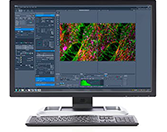
IMAGING01
This CCAM user computer is a Windows 7 computer with MetaMorph, Photoshop, Office, Zeiss LSM and Zen Image Browsers. All the software is available, with prior approval, via remote access. Located at: ARB, E6011, 263 Farmington Avenue.
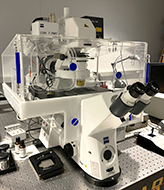
Zeiss LSM 780 Confocal Microscope
The 780 is a combined confocal/FCS/NLO system, mounted on an inverted Axio Observer Z1. The 780 employs the spectral 32-channel QUASAR GaAsp detector allowing for spectral imaging, maximum sensitivity photon counting, and Fluorescence Correlation Spectroscopy (FCS) as well as two adjacent PMTs. The GaAsp detector has a detection range of 410 - 696 nm while the PMTs have a range from 415 - 735 nm. The accompanying incubation system, which encloses the microscope, offers stable environmental conditions with temperature, humidity and carbon dioxide control. This microscope is also equipped with a Becker-Hinkl Fluorescence Lifetime Imaging Microscopy (FLIM) detector on a nondescanned detection port, particularly useful for detection of fluorescence resonance energy transfer (FRET) based probes. Located at: CGSB, Imaging Suite R1510, 400 Farmington Avenue.
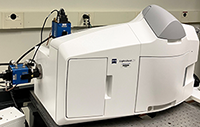
Zeiss LightSheet
The Zeiss LightSheet is an advanced fluorescent microscope that allows you to image optical sections of large, live or fixed samples with virtually no bleaching or phototoxicity to the specimen. The optics are equipped for water-based or cleared specimens and dual sCMOS cooled cameras to provide high sensitivity, rapid, 3D imaging of live or fixed thick specimens. The extremely fast acquisition speeds allow you to capture large amounts of data within a fraction of the time compared to other imaging techniques. Located at: CGSB, Imaging Suite R1510, 400 Farmington Avenue.
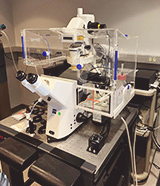
AxioVert 200M
The Zeiss AxioVert 200M is a motorized, inverted microscope fitted with an incubation system for live cell imaging, providing heating, humidification, and carbon dioxide environmental conditions. The system is equipped with a Hamamatsu ORCA Digital CCD camera, with 70% quantum efficiency and 1344 (H) x 1024 (V) pixels. The scope is capable of phase and DIC microscopy and is fitted with a Lumencor Spectra 7, 6 LED light source for imaging with CFP, GFP, OFP/mCherry, and Cy5. MetaMorph software is used for the acquisition and analysis of data, including the ability to capture long-term, time series with multiple positions. Located at: CGSB, Imaging Suite R1510, 400 Farmington Avenue.
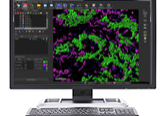
Imaris
Imaris is a 64 bit computer with ImarisSurpass 3-D rendering and analysis software, MetaMorph, Photoshop, and Zeiss Zen Image Browser. All software is available, with prior approval, via remote access.
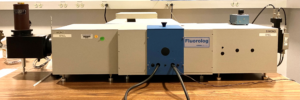
Fluorolog
The Horiba-Jobin Yvon Fluorolog is a dual-emission spectrofluorometer. The visible detector has an emission range of 290 nm - 850 nm while the IR detector has an emission range of 850 nm - 1600 nm. The system is capable of emission scans, where the excitation wavelength is fixed, while the emission monochromator scans the sample, and excitation scans, where the emission wavelength is fixed, while the excitation monochromator changes the incident light. The sample chamber can also be temperature-controlled. Located at: CGSB, Imaging Suite R1510, 400 Farmington Avenue.
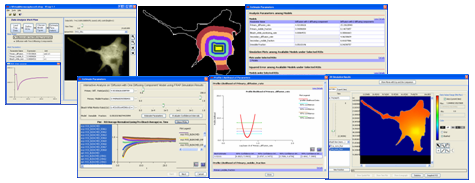
Software
CCAM offers a wide variety of software ranging from applications for analyzing FRAP and other image data to tools for generating models and model parameters, including
-
- Virtual FRAP Tool
- SpringSaLaD
- BASDI
- OCTANE
Campus Address
Academic Research Building (ARB)
E6011
Cell & Genome Sciences Building (CGSB)
Imaging Suite R1510
UConn Health
Mailing Address
400 Farmington Avenue
Farmington, CT 06030-6406
263 Farmington Avenue
Farmington, CT 06030